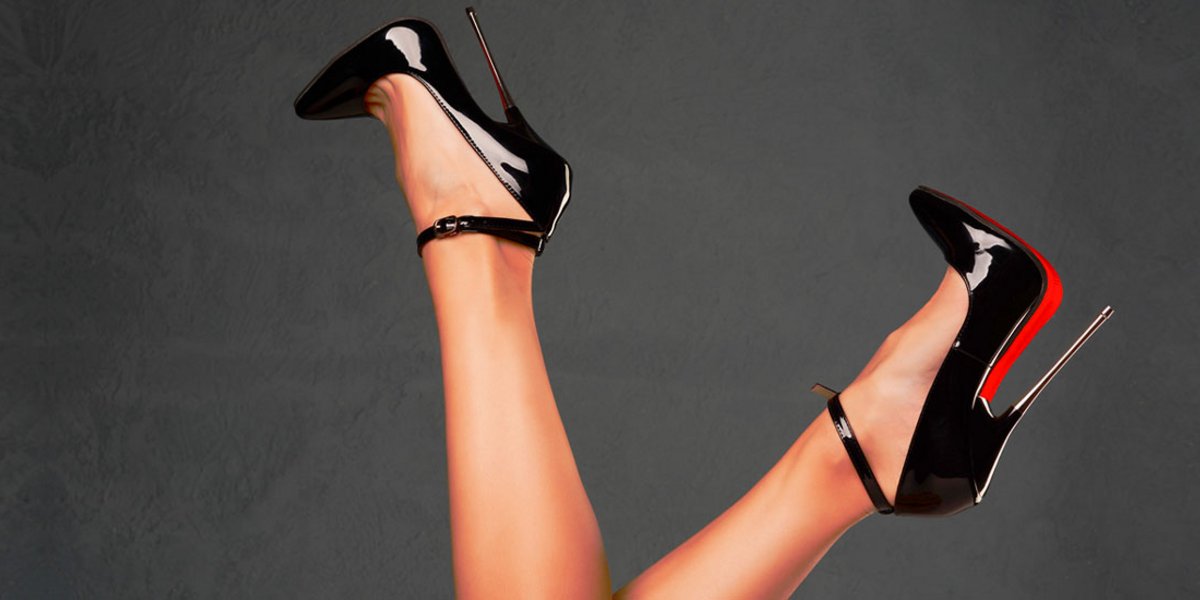Less masochistic, but just as fetishistic and far from being considered the social norm, this refers to a practice that consists of worshipping a fetish. For sexologists, fetishism is a practice that causes arousal or induced orgasm through the use of non-living objects such as clothing or shoes.
The particularity of this practice is its exclusive and indispensable character for the fetishist. In other words, without the exciting object, he or she cannot achieve pleasure. The fetishist is therefore not turned on by sex but by their fetish, to the detriment of everything else.
Obviously, it is still necessary to specify, and to reassure you, that even if the vast majority of people appreciate certain outfits on their partners, that might makes them fetishists but not partialists. ( See explanation below).
When the parts of the body are reduced to being an object
Placed between sadomasochism and exhibitionism, fetishism can be the object of adoration, but it takes a really pronounced predilection, to the point of disrupting a person's social life, so that we can really speak of fetishism as being such.
In sexual fetishism, adoration of the body and its parts is replaced by a sexual appetite where language and eroticization remain object-based.
In the family of fetishists, I want to know...
Consider that there are three main families of fetishists, and that everyone is "more or less" fetishist.
Partialism
The so-called "partialist" fetishist is a person whose sexual interest remains focused on a particular part of the body, such as the navel, toes, buttocks, breasts, back, legs, etc.
In this category we find, (without much astonishment); podophilia, foot fetishism, which comes at the top of the ranking of the most adored body parts. This practice consists of licking, biting, or simply contemplating the feet of your partner and for the more adventurous, being stepped on.
Fetishism of an object
Object fetishists. The best-known being shoes. In this category, we find altocalciphilia: the fetishism of thigh high boots or stiletto heels, which are the most widespread fetishes. We all think of the success of the creator "Louboutin" who knew how to surf on the fetishism of high heels; pumps with stiletto heels and a red sole... Among the objects, we also find piercings on the lips, the tongue, the navel and the nipples.
Doraphilia
Material or clothing fetishists: you have leather, latex, vinyl, silk, velvet, lace and even wool fetishists… Everyone has their favorite textile.
The clothes that come out on top are of course: stockings, skirts, and of course all the lingerie and underwear. Then we find: gloves, glasses, lipstick, hairstyle, etc. The list of fetishes is not exhaustive and never will be, so many variations, the fetishes are endless.
Here are some rarer and even more particular practices of fetishism:
Autonepiophilia results in a huge desire to want to wear diapers.
Sitophilia: use of food for sexual purposes.
Menophilia: sexual attraction to women during their periods.
Frotteurism: the goal is to rub against someone's body or against an object for erotic purposes.
Ursusagalmatophilia: sexual attraction to teddy bears.
Oculolinctus: the goal of this practice is to lick the eye of your partner.
For the affected individual, seeing or touching his fetish elevates sexual arousal within him.
There are a multitude of facets to sexual fetishism, as there are so many objects and preferences, but some are more widespread than others. But let's not confuse fetishism and fantasies!
Fetishist or partialist, as long as it does no harm to anyone...
There is nothing unhealthy between consenting adults, but if your sexual concerns and preferences begin to have a negative impact on your life, it is suggested that you consult a professional.
We are a long way from politically correct sex, which is why a couple's reflection on respect for both body language and the meaning of sexuality is therefore necessary.
Ladies, even in the name of fantasy and creativity, know how to set healthy boundaries for yourself.









